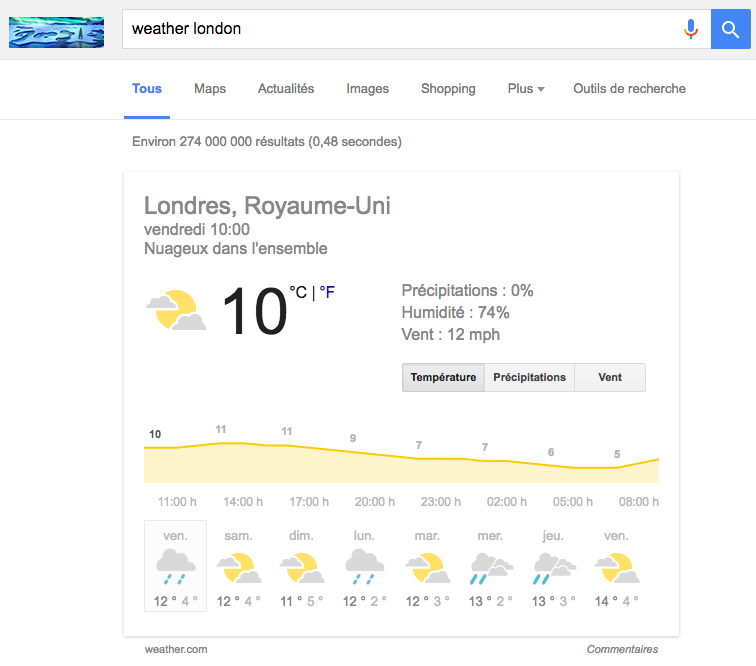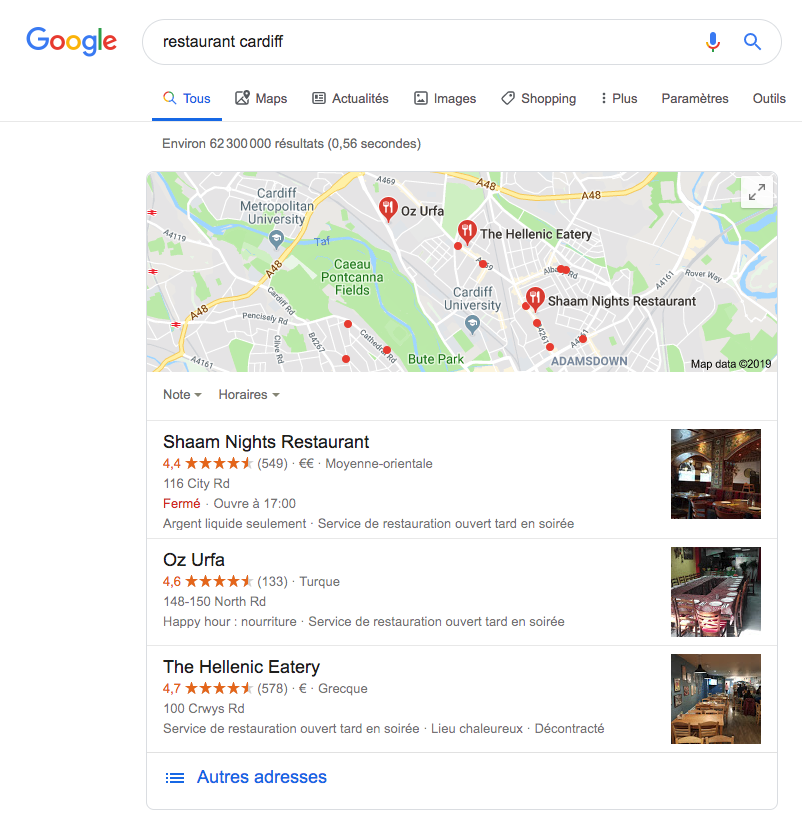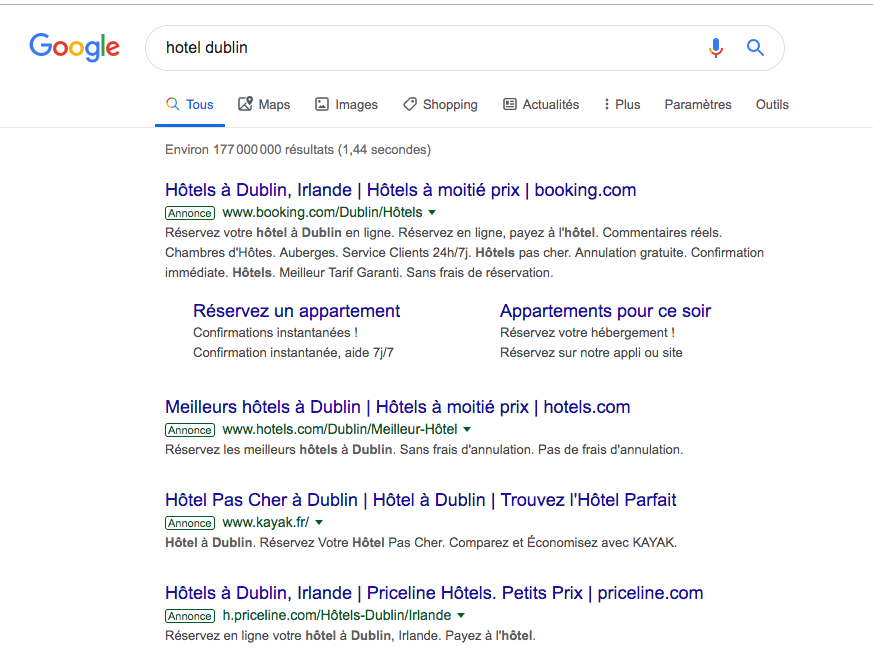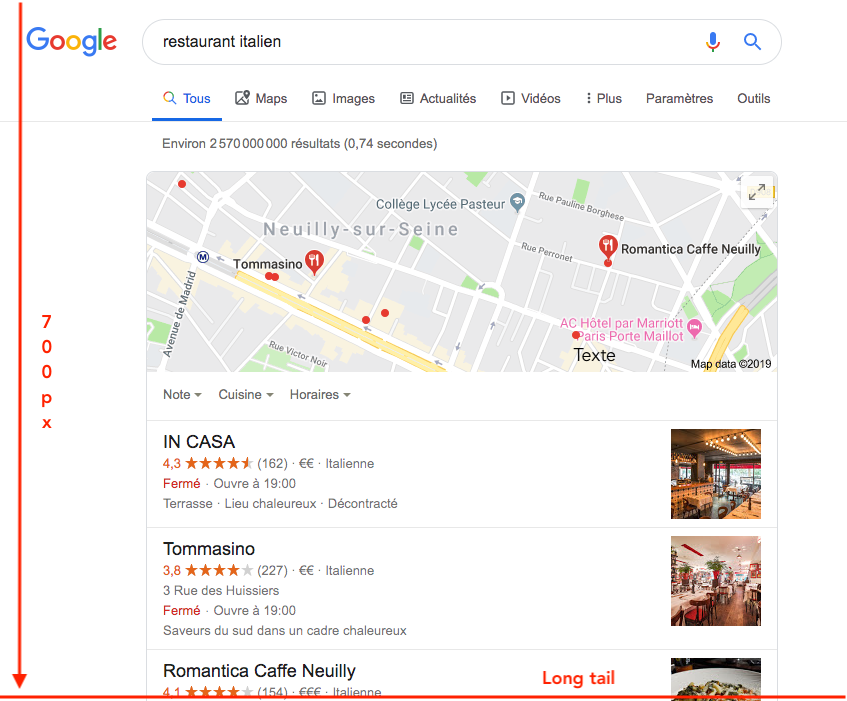The American giant Google is constantly testing and adding new features to its engine due to the increasing evolution of searches and machine learning. These developments sometimes completely modify the composition of the results page (SERP) and therefore the natural results position.
Being first in SEO is not always synonymous of good visibility these day. This can be explained by the physical positioning of a site on a SERP (known as pixel ranking) due to the multitude of new formats offered by Google in its search engine.
Through this article, we propose to discover why it is essential to know and measure this physical positioning in order to determine the actual potential and visibility of searches.
The SERP surface: the search engine answers
Thematic blocks
The Google results pages surface (SERP) is on average made up of ten natural results. Depending on the nature of the request, thematic blocks can be added at the top of the page.
- Top box
This is a block of informations related to the user’s request. Google directly provides information thanks to data that it holds or which it offers from partners’ websites. Example for the weather in a particular city:

- Google Maps results (itinerary)
Depending on the geographical location of the user, Google displays Google specific adresses results and classes of local companies on a map (Google Maps). These results generally appear above the first results knows as “organic” (naturals).

- AdWords results
Since February, Google has removed the Adwords block that was on the right side of the SERP. In parallel, it has added a fourth Adwords link in “premium” position, above the natural search results. It therefore no shows four ads instead of the three previously.

The fold
The fold is an imaginary line indicating the visible part of the screen from which the user must use the scroll to be able to consult the rest of the contents.
Depending on screen resolutions, this may vary from 11″ inches to 27″ inches. The fold and the direct visibility zone are obviously not the same. For myposeo and according to estimates based on the global computer park, this long tail can be around 700px in height compared to the Google search bar.

If the fold is an interesting concept, it is because it has been proved (and this seems rather logical) that the results directly displayed on the pages are going to get more of an audience that those non- visible at first instance on the screen. The issues for SEO are then reviewed once the search engines offer answer extensions, box or sponsored links at the top of page.
The physical positioning
The first SEO position
You will understand that all these thematics blocks (Adwords, Maps, Top box) shift the natural results to the bottom of the screen and sometimes well below the long tail of the users. In this context, and if for example we observe the results page for the query “hotel nantes” for the Trip advisor website, we notice that the top of the SERP has 4 Adwords ads, followed by the Google Maps block.
The main consequence of these thematic blocks in the allocation of the area is that the first natural result is at 1 299 pixels from the top of the page. So it is not visible on the first user screen. The user will have to come down and scroll on the screen to see it displaying (and so be able to click on it).
Even if we have no exact number relating to the apparence of these blocks on certains type of research with regard to click-through rate and therefore traffic, the first estimates showed that the traffic from SEO (Google organic search) tented to decrease on keywords sets on the arrival of blocks or the SERP by lowering the natural results.
Measure its position AND its physical position
If today, we raise the awareness of the SEO actors of the importance of physical position, it is also to advance that myposeo is, today, the only rank tracking tool to offer it.
In fact, for all positioned keywords we collect an indicator of Pixel position (or Pixel Ranking) provided in order to obtain, for the result on first page, an estimate of the height at which the ad is set.
By clearly indicating (in green or red) if the physical position is above or below the long tail, we enable you to put in perspective some “good” positions such as that of the example given above. The site is actually first on this competitive request, however it is not immediately visible to users.
These calculations made by the SEO rank tracking tool also allow you to know the total height of a page or the place of an element at the top (still in pixels) to understand the SERP environment better and so, for example, favour the optimisation of request with the possibilities of being directly visible to the users.
![]()
In the “SERP” tab of myposeo’s SEO rank tracking, it is thus possible to detect whether the search has a top box (1=yes, 0=no) and its height (590 or 501 pixels in the example above).
Conclusion
You’ve got it! Sometimes be first but below the long tail contributes a decrease the visibility of a website. Falling below this line cause some drops in clicks on your ad and therefore natural traffic. That’s why, it is important (and maybe even essential) to know its physical position (pixel ranking) besides the monitored position.
Secondly and in the logic of choosing your keywords or target expressions, it is important to know the environment (SERP) besides the competition (other positioned websites) in order not to waste too much time improving the positioning expressions, for the greater visibility of which SERP is not suited.
Carol-Ann
Marketing manager @myposeo, community manager and writer.
- More Posts (664)
